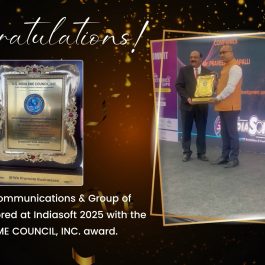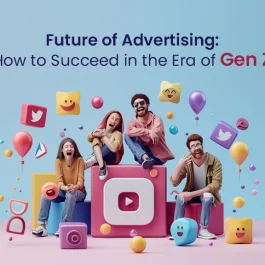6 min read

It is becoming more difficult for companies to cultivate and preserve customer loyalty to their brands in today’s rapidly evolving digital environment. Thanks to the abundance of options, customers can quickly compare prices, read reviews, and book their next purchase. As a result, in this highly competitive market, developing brand trust has become crucial for business success.
The importance of brand loyalty in business will be emphasized in this blog post, along with strategies for navigating the digital landscape while providing customers with memorable experiences that entice them to return for more. We will show you how to develop enduring relationships with your audience and stand out in a crowded market by utilizing technology and personalizing customer interactions.
Table of Contents
Brand Loyalty in the Digital Age: What Is It?
Consumers’ sentiment and faith in a brand determine their loyalty in the digital age. Repeat customers and positive word-of-mouth marketing are brought about by this connection; both are crucial for the long-term understanding of what causes brand loyalty and how businesses can change with the times, which will help us understand it better. Accept that the world is changing.
Brand Loyalty Influencing Factors
Client Experience: The quality of the total customer experience greatly impacts developing brand loyalty. Customers expect smooth ordering procedures, attentive customer service, and enjoyable experiences all along the way.
Personalization: Consumers place increasing value on a customized experience that caters to their needs and preferences. Businesses can design targeted marketing campaigns and provide tailored services that appeal to their audience by understanding their customers’ demographics, interests, and behaviors.
Rewards Schemes: Consumers may be encouraged to choose a particular brand over rivals through loyalty programs that provide special advantages, savings, or rewards. These programs ought to be simple to use, accessible, and offer real benefits to users.
Online Reputation: Online testimonials and ratings have become essential in the digital age for establishing credibility and trust with potential clients. A strong online presence and reputation management services can significantly impact an organization’s decisions.
Utilization of simplicity and accessibility: Since more and more customers are using mobile devices to research products and make reservations, businesses must make sure that their websites and apps are responsive, user-friendly, and accessible across various platforms.
Brand Loyalty and the Impact of Digital Channels
Digital channels have transformed how businesses interact with customers, providing multiple touchpoints and opportunities to build brand loyalty. Companies can establish a strong online presence, interact with their audience, and build enduring relationships by utilizing social media, online reviews, and digital marketing strategies.
Increasing Brand Loyalty Through Social Media
Engagement: You can show your customers that your company values their business and values their opinions by promptly and professionally responding to their comments, questions, and messages.
Easily shared content: By producing shareable content, like visually appealing images, engaging videos, or gripping stories, you can encourage users to tell others about your company, boosting visibility and luring new clients.
Special offers and promotions: Sharing exclusive deals, promotions, or discounts on social media can encourage followers to stay devoted and place additional orders.
Individually created content promotions: Promoting real-world examples of your brand’s offerings on social media by encouraging customers to share their reviews, photos, and experiences can help your business gain credibility.
Brand Loyalty Development Using Online Reviews
Follow up on reviews and reply to them: To show your dedication to customer satisfaction, respond to any unfavorable comments professionally and helpfully.
Inspire contented clients to post reviews: By requesting reviews from pleased customers, you can enhance your online reputation and attract more potential clients.
Please take advantage of favorable comments in marketing materials: Since positivity is contagious, promoting it in your advertising, on your website, and on social media can assist you in establishing credibility and gaining the trust of potential customers.
Digital Marketing Techniques to Encourage Brand Loyalty
Email marketing: Email marketing campaigns let you stay in touch with your customers by sharing information about upcoming sales, distributing insightful content, and making tailored suggestions based on their preferences.
Retargeting advertising campaigns: Retargeting campaigns can assist in re-engaging clients who have previously interacted with your brand by showing pertinent ads as they visit other websites or utilize social media platforms.
Influencer collaborations: Influencers can share their interactions with your brand, resulting in genuinely engaging content for prospective customers.
Establishing Emotional Bonds With Customers
Building brand loyalty in this industry depends on establishing emotional connections with consumers. Businesses can inspire gratifying feelings, memorable experiences, and a sense of belonging by utilizing personalization and storytelling, which keeps customers coming back.
Utilizing storytelling to establish an emotional connection with clients
Brand story: To engage customers emotionally, share your brand’s distinctive story, mission, and values. You can accomplish this through your website, social media accounts, or promotional materials.
Client testimonials: Encourage clients to share their stories, recommendations, or reviews to demonstrate your brand has beneficial effects on their lives.
Visual narratives: To communicate the spirit of your brand and the experiences it provides, use high-quality photos, videos, or interactive content.
Authenticity: Showcase your brand’s actual experiences, difficulties, and successes in your storytelling by being sincere and transparent.
Increasing customer satisfaction and experience
Enhancing customer satisfaction and experience is crucial for fostering brand loyalty in the marketplace. Technology can aid in streamlining the customer journey, making it more effective, pleasurable, and hassle-free.
Easy-to-use mobile applications and websites: The user experience can be greatly improved by creating responsive, user-friendly websites and mobile applications.
Online payment and ordering platforms: The reservation process can be made easier, more friction-free, and with higher customer satisfaction by implementing seamless online ordering and payment systems.
Chatbots and artificial intelligence: Artificial intelligence-powered chatbots can respond instantly to customers’ queries and issues.
Personalized suggestions: Utilize data analysis and machine learning algorithms to give customers customized recommendations based on their preferences, search history, and behavior.
Augmented and virtual reality: Adopt virtual and augmented reality technologies to offer customers immersive experiences that let them browse locations, lodgings, or attractions before placing an order.
Updates and notifications in real-time: Real-time notifications via email, SMS, or push notifications can be used to inform customers about their orders, changes to their itineraries, or any potential issues.
Analytics and consumer feedback: To learn more about the experiences and levels of satisfaction of your customers, gather their feedback through surveys, reviews, or social media.
Loyalty Schemes And Benefits
Loyalty programs significantly help with brand loyalty and customer retention. Businesses can develop a more personalized and captivating experience. It promotes repeat business by tailoring these programs to accommodate specific customer preferences.
Levels of tier membership: Set up different membership tiers for your loyalty program, each with special privileges and rewards based on the volume and price of transactions.
Customized prizes: Adapt your rewards program to your customer’s interests, preferences, and past actions. For instance, offer discounts or exclusive deals on places to go, things to do, or services relevant to specific customers.
Redeeming flexible options: Allow customers to choose how they want to use their points or rewards, such as by offering them discounts on future purchases, free upgrades, or access to exclusive events.
Delight and surprise: Surprise customers with unanticipated gifts or benefits, like extra points on their birthday, invitations to events only they can attend, or complimentary services.
Gamification: Your loyalty program should include gamification components like challenges, badges, and progress bars.
Continuous integration: A seamless loyalty program integration with your website, mobile app, and other customer touchpoints is essential.
Communication and transparency: By regularly communicating with customers via email, SMS, or push notifications, keep them updated on the status of their loyalty program, upcoming sales, and new rewards.
Making An Integrated Omnichannel Experience
To engage customers effectively and consistently across all touchpoints, businesses must provide a seamless omnichannel experience. Customers can interact with your brand naturally and appropriately through your website, mobile app, social media, and physical touchpoints.
Brand consistency:
To establish a unified brand identity, keep your visual identity, messaging, and tone consistent across all your channels.
Cross-channel efficiency: Make it possible for customers to access information and carry out tasks across various touchpoints. For instance, let them start a purchase on your website and finish it in-store, or let them log into their loyalty program account on both the website and the mobile app.
Unifying customer service: Provide consistent and effective customer service on all platforms, including the web, mobile apps, social media, and in-person.
Integration of social media: One of the most important aspects of your omnichannel marketing strategy is letting customers engage with your brand on social media platforms like Facebook, Instagram, and Twitter.
Conclusion
As a result of the fierce competition that businesses face and the abundance of options that consumers have today, brand loyalty is more critical than ever in the digital age. Customer experience, personalization, and seamless omnichannel integration must be prioritized by businesses to cultivate and sustain strong brand loyalty.
Businesses can develop deep relationships with their customers, build trust, and, ultimately, develop a devoted customer base that sticks by them through the years by utilizing technology and data-driven insights.
Businesses will flourish if they embrace the opportunities and challenges the digital age brings. They will also stay relevant and top-of-mind for their customers in an increasingly connected world.
Published: September 9th, 2023








